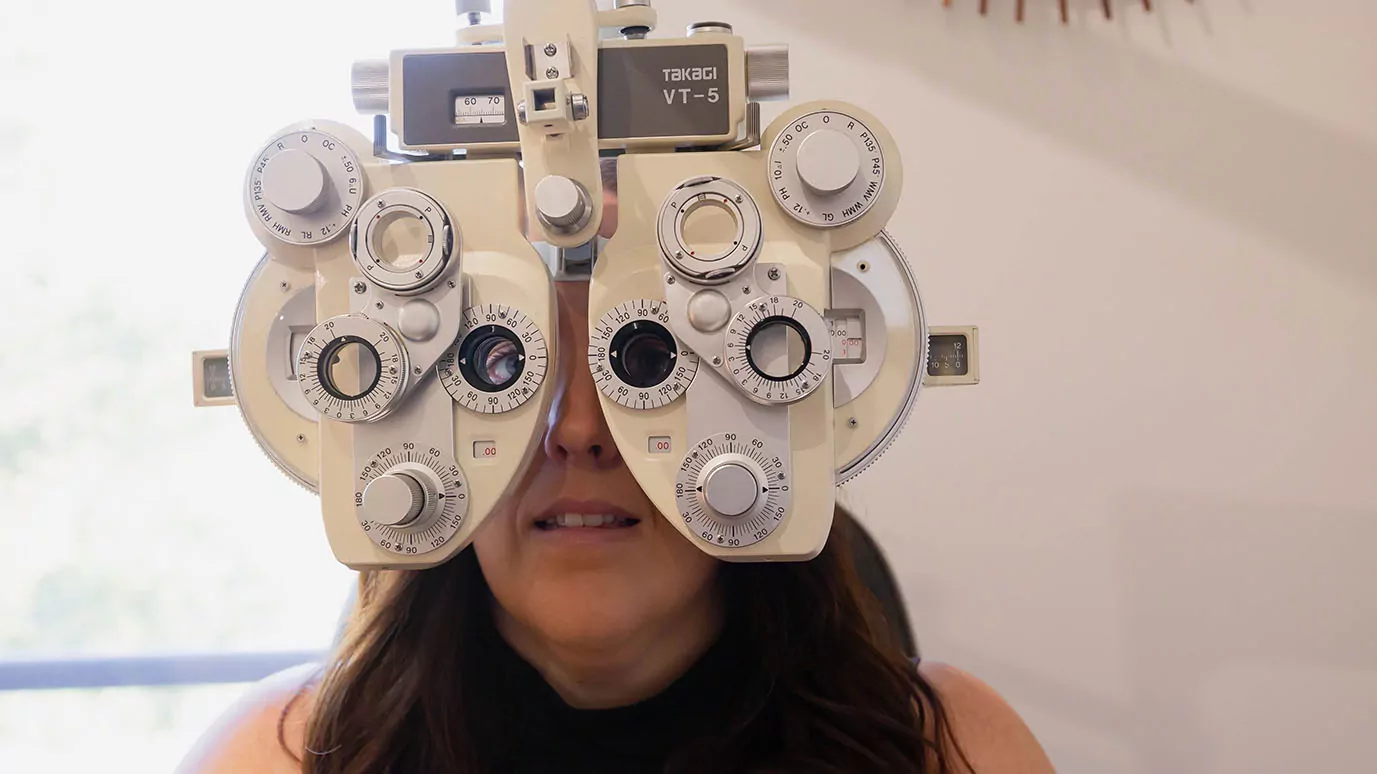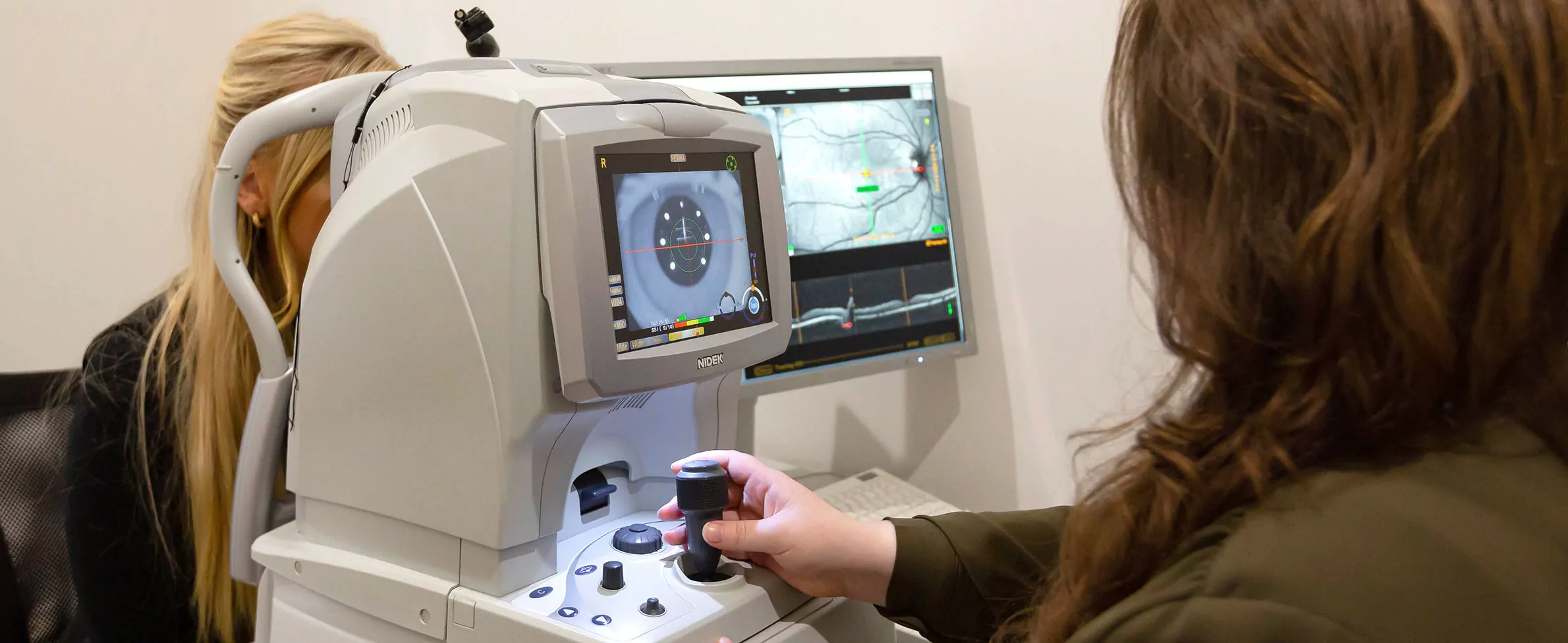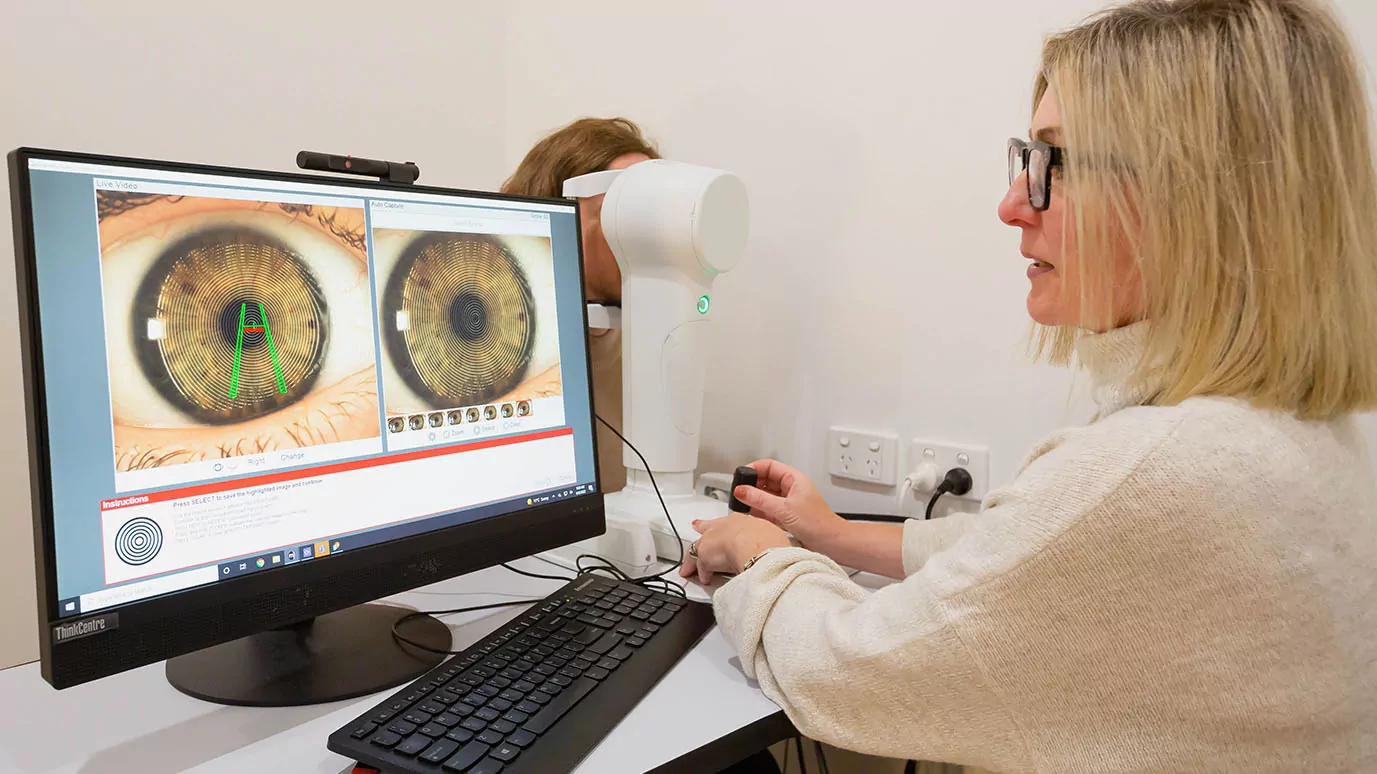People with myopia do not see distant objects clearly. About 15% of the population is shortsighted. The exact causes of myopia are unknown, although it appears to be a combination of genetic and environmental factors. Myopia can be corrected easily with spectacles or contact lenses, and it can also be reduced by orthokeratology (also known as corneal refract or refractive surgery. Myopia control is also a treatment option to minimize or even stop the progression of myopia. Presently there are various modalities of myopia control which have been clinically shown to reduce the rate of myopia progression and these include orthokeratology (also known as corneal refractive therapy), multifocal soft contact lenses, pharmacological using atropine eye drops and specially designed myopia spectacles.

Hyperopia is the opposite of myopia. People with hyperopia do not see near objects clearly. Younger people can often compensate for their hyperopia by the process of accommodation (changing the focusing power of the lens inside the eye), although this may cause symptoms of eye strain. Hyperopia can also be corrected using spectacles or contact lenses, although low degrees of hyperopia sometimes do not require any correction in children and young adults.

Astigmatism is a focusing error that causes asymmetric blur with some directions in an image being more out of focus than others. This contrasts with both myopia and hyperopia where all directions in an image are uniformly blurred. Astigmatism is usually due to the shape of the cornea (the front surface of the eye). Normally the cornea’s curvature is the same in all directions (like a soup spoon) but sometimes it is steeper in one direction than another (like a dessert spoon) and this causes the astigmatism. Less frequently, astigmatism may be due to irregularities in other components – such as the lens and the retina – of the eye. Astigmatism usually leads to difficulty in seeing fine detail – as well as eyestrain and headaches if the degree of astigmatism is high – and it can be corrected by spectacles or contact lenses.
Presbyopia is a condition where the eye gradually loses the ability to focus at a normal reading distance. It is first noticed between the ages of 40 and 50 years when people find that they can no longer focus comfortably on objects closer than at arm’s length. Presbyopia is not a disease and it affects everyone. It is thought that the most probable cause of presbyopia is a loss of elasticity of the crystalline lens inside the eye. Presbyopia is usually corrected by a spectacle prescription that is designed for close distances. Spectacle options include single vision reading glasses (which will make near objects clear but distant objects blurry) and multifocal glasses (which incorporate progressive lenses that provide clear vision at both distance and near). Less commonly used spectacle forms include ‘look-overs’ or half-glasses, and bifocal or trifocal glasses. Presbyopia can also be managed by prescription of contact lenses.

Keratoconus represents a progressive, non-inflammatory thinning and protrusion of the central cornea usually manifesting itself in youth or adolescence, although the age of onset can be anywhere between 7 and 50. It is nearly always bilateral, although it is often asymmetrical. Considerable visual impairment can result due to the development of a high degree of irregularity associated with this front surface ("window") of the eye. Due to this marked distortion and irregularity the improvement in vision obtained with spectacles may be minimal. There is usually a marked improvement in vision if rigid contact lenses (or similar) are fitted and they are often the only adequate means of correction for patients suffering this condition. If keratoconus is progressing, a patient may be able to have the corneal collagen cross-linking treatment (CXL) which is aimed at halting the progression of the keratoconus. This procedure works by increasing collagen cross-linking, which helps to prevent the cornea from becoming more conical and irregular, as it would normally with progression of the keratoconic condition. Keratoconus does not cause blindness.
Strabismus is a condition in which the eyes are not properly aligned with each other – and not working together – when focusing. With strabismus, the affected eye may be turned in (convergent squint) or turned out (divergent squint). As a result, the eyes look in different directions and do not generally focus on the same point. A person with strabismus will often have impaired binocular function (therefore affecting depth perception) and they may also have amblyopia (‘lazy eye’) in the affected eye. Treatment options for strabismus include spectacles, special eye exercises, occlusion (patching of one eye) and surgery.
Cataracts are a clouding or opacification of the lens inside the eye. They are generally a result of ageing and long-term exposure to ultraviolet light. Cataracts may also be caused by trauma to the eye and in rare cases they can be present at birth. Note that cataracts simply represent a change in or alteration to the lens material – they are not a growth. Cataracts are very common in people over the age of 65 and a family history of cataracts can increase the likelihood of developing the condition. Over time cataracts will generally get worse, with increased opacification of the lens causing the patient’s sight to become worse. Thankfully, cataracts can be surgically removed when they reduce vision to the point that the patient’s quality of life is starting to be affected. Cataract surgery is now a relatively minor and straight forward procedure – usually performed on an out-patient basis – and most patients will have an intraocular lens inserted at the time of surgery to replace their own cloudy lens.
Babies can also be born with cataracts and congenital cataracts are one of the major causes of visual impairment in children. In Australia, the incidence of infantile cataract is about 1 in 5000. The visual outcomes for babies with cataracts have improved dramatically over the last couple of decades. Earlier detection of congenital cataracts and prompt surgical removal means that these patients now have a much better visual prognosis. Advances in contact lens technology have led to a significantly higher success rate with contact lenses and this has been a major factor in improving the visual outcomes for babies who are required to undergo cataract surgery.
Glaucoma is a degenerative disease of the optic nerve that can be associated with an increased pressure inside the eye. The function of the optic nerve is to transmit information from the eye to the brain. Increased intraocular pressure (IOP) can cause damage to the optic nerve, which can then lead to loss of visual field (peripheral or side vision). Glaucoma is a particularly dangerous eye disease because usually there are no symptoms until permanent damage has occurred and the patient is unaware of a problem. Checking for glaucoma is an important reason why regular eye examinations are required. Although people can have glaucoma without having a ‘high’ pressure inside their eye, reducing the IOP by means of topical medications (eye drops) has been found to be the best treatment for glaucoma. If topical medications cannot reduce IOP enough to prevent optic nerve damage, the IOP can be decreased further by surgery that increases the drainage of fluid from the eye.
Age-related macular degeneration (AMD) is the leading cause of blindness in older people in Australia. The macula is the central part of the retina and it is responsible for our ability to read, recognize faces, drive a car, see colours, and any other activity which requires fine vision. AMD is a result of age-related changes in the function of the macula that cause progressive loss of central vision, leaving only peripheral or side vision intact. About 85% of cases of ARMD are classed as “dry” AMD. This is a slower form of the disease causing gradual loss of vision and it is due to cell death in the retina and the retinal pigment epithelium. The other 15% of cases are classed as the “wet” AMD. This is a more severe form of the disease (usually associated with rapid vision loss) and is caused by the growth of fragile new blood vessels into the retina that then leak and bleed, leading to scarring and loss of vision. There is no treatment for dry AMD. There are currently three possible treatments for wet AMD – photodynamic therapy, laser photocoagulation and anti-VEGF drugs.
About 7 % of Australians have diabetes. Approximately 2 % of people who have had diabetes for 15 years or longer will become blind and 10 % will develop severe visual impairment. Diabetic retinopathy is an eye disease caused by the complications of diabetes and it is the most common way in which diabetes affects vision. Two basis pathophysiologic mechanism underlie the clinical manifestations of diabetic retinopathy – increased capillary permeability and closure of retinal capillaries. These changes produce vascular leakage and retinal ischaemia, thereby resulting in a loss of vision. Vision loss and potential blindness can be prevented if diabetic retinopathy is detected and treated early. The most common form of treatment is laser photocoagulation of the retina. Studies have shown that intensive treatment and tight control of blood glucose levels dramatically reduces the development and progression of diabetic retinopathy in diabetic patients.